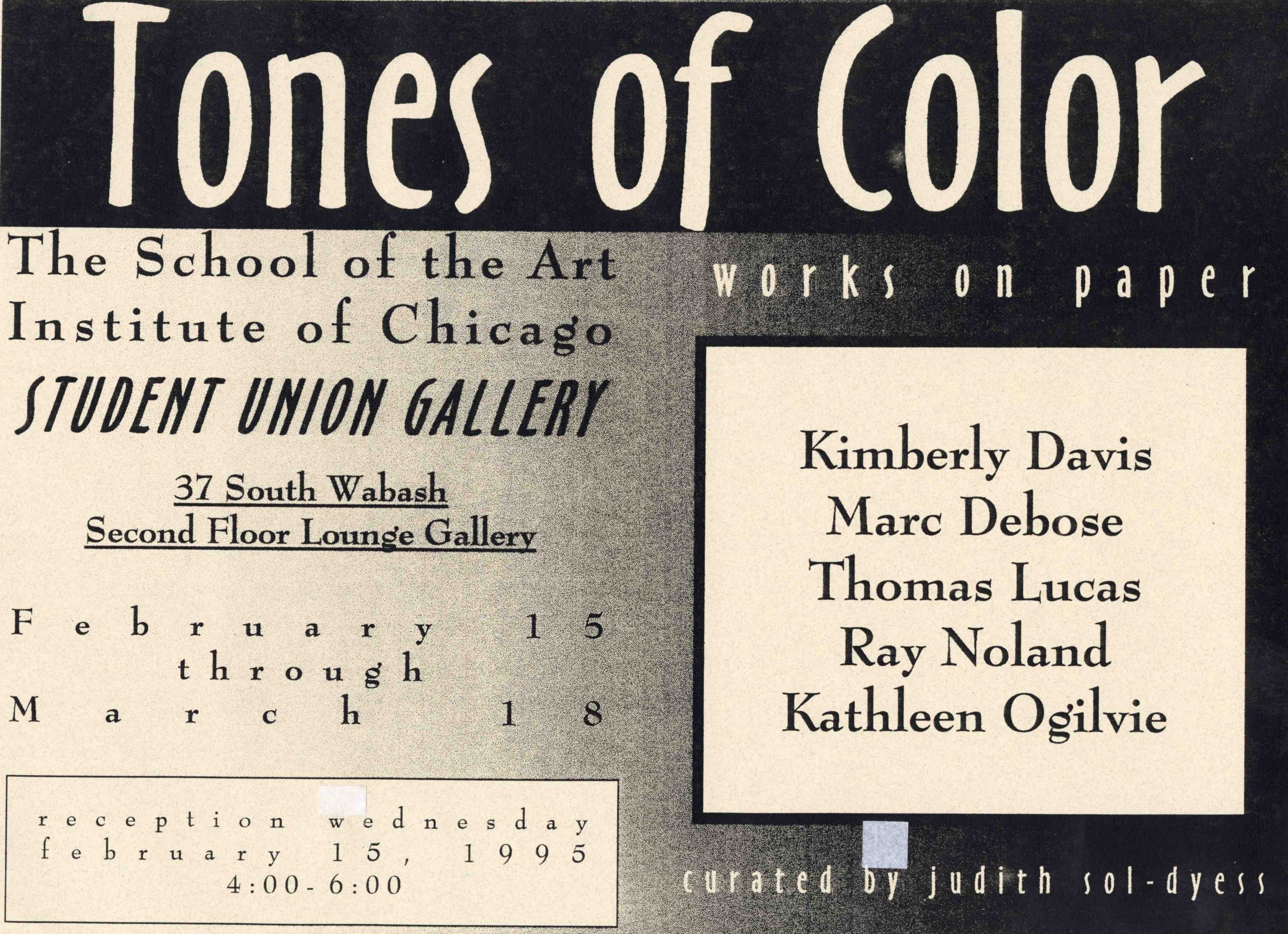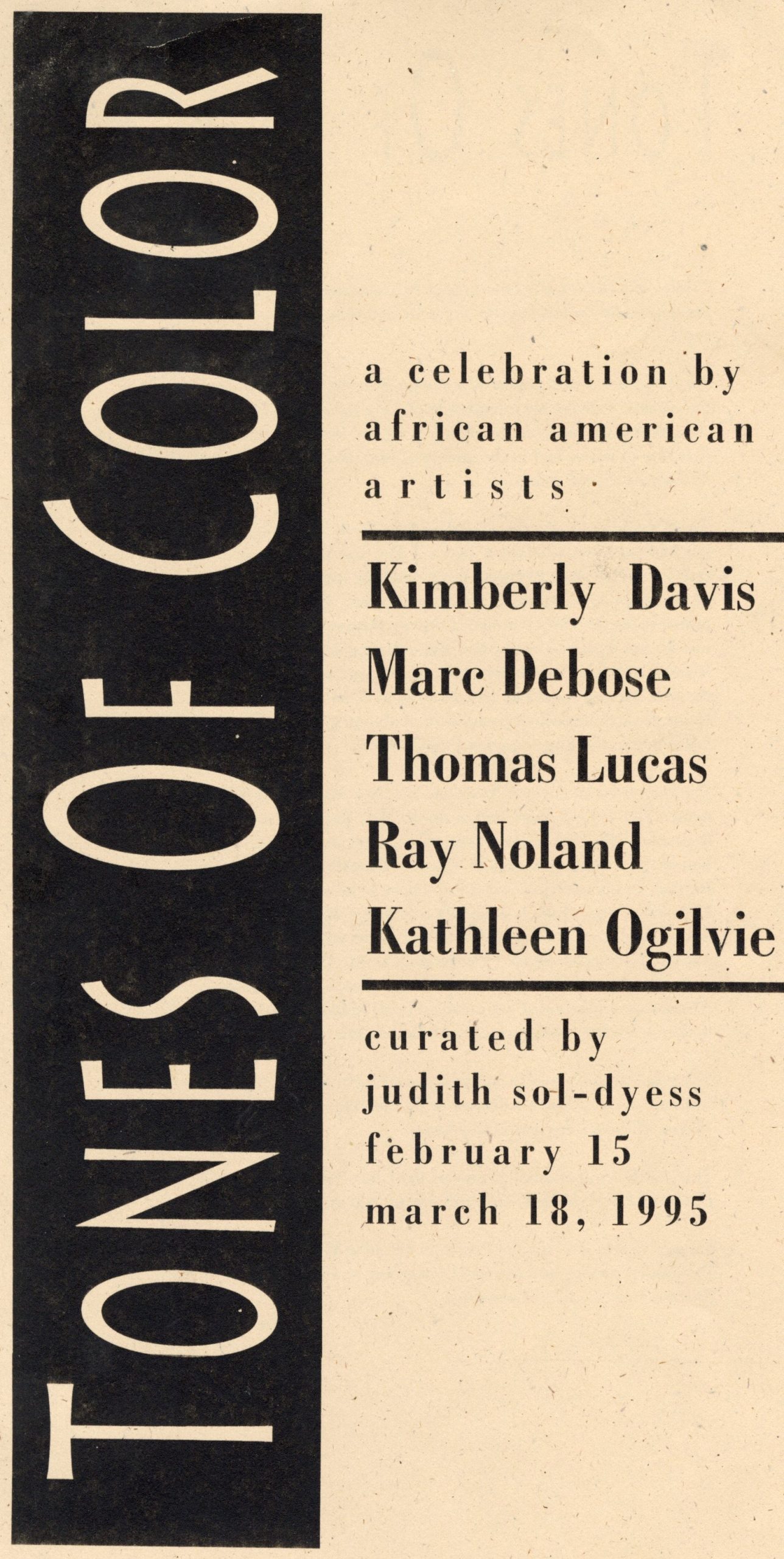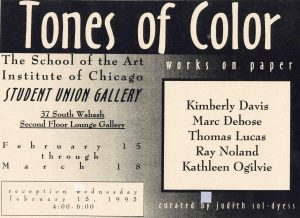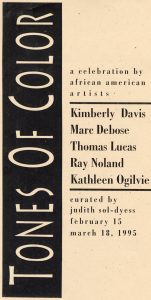Tones of Color
1995
February 15 – March 18
LG Space
Organizer
Judith Sol-Dyess
Contributing Artists
Kimberly Davis, Marc Debose, Thomas Lucas, Ray Noland, Kathleen Ogilvie
Exhibition Statement as Preserved in the SUGS/SITE Archives:
“Tones of Color” is not only a tribute to past African American artists but also recognizes and celebrates the diversity and richness of contemporary ones. The idea for this exhibit was originally presented to me by Mr. John Rozelle, Assistant Professor, Paitning and Drawing Department. It was brought to his attention that the School, which has traditionally supported African Americans artists, did not have an event to acknowledge African American artists dueing February, known as African American History Month. All the works on exhibit are on paper. The approaches vary, as do the concerns of the artists. It is not my intention to classify their art as belonging to an African American aesthetic. I simply wish to shwo a continuum in the diversity of issues and in the high quality of work that already distinguishes African American artists. There have been a number of different interests and problems throughout the history of African American artists. The first known professional portrait painter, Joshua Johnston, portrayed only two African Americans in more than eighty paintings attributed to him. This may have been a result of white patronage. Henry Ossawa Tanner, whose work was for the most part concerned with religious subjects, was the first African American to achieve international acclaim. Edomonia Lewis was the first African American to do so. She paid her way to Rome through medallion portraits of abolitionist leaders executed before the Emancipation Proclamation. The serach for an African American aesthetic has been the concern of mnay, but not all. This is best illustrated by the Harlem Renaissance of the 1920’s and early 30’s. It is probably the first major artistic movement concerned with a reclamation of the African past and its legacy to the arts. Artists such as Norman Lewis and Hale Wooddruff whose earlier careers were shaped by Social Realism later chose to make work which was more abstract. On the other hand, artists such as Charles White would continue to explore Social Realism through the 1950’s. During the 1960’s, some artists formed groups such as AfriCobra and Spiral to communally approach the issue of an African American aeshtetic again. The involvement of African American artists todya is not limited to the visual arts. It also includes dance, theater, performance, and installation among others. The result is an exquisite and profound body of work that stands as testimony of a history as diverse as its individuals. African American artist today are part of this legacy.
Programs
February 14, 4:00 – 6:00 PM
LG Space





